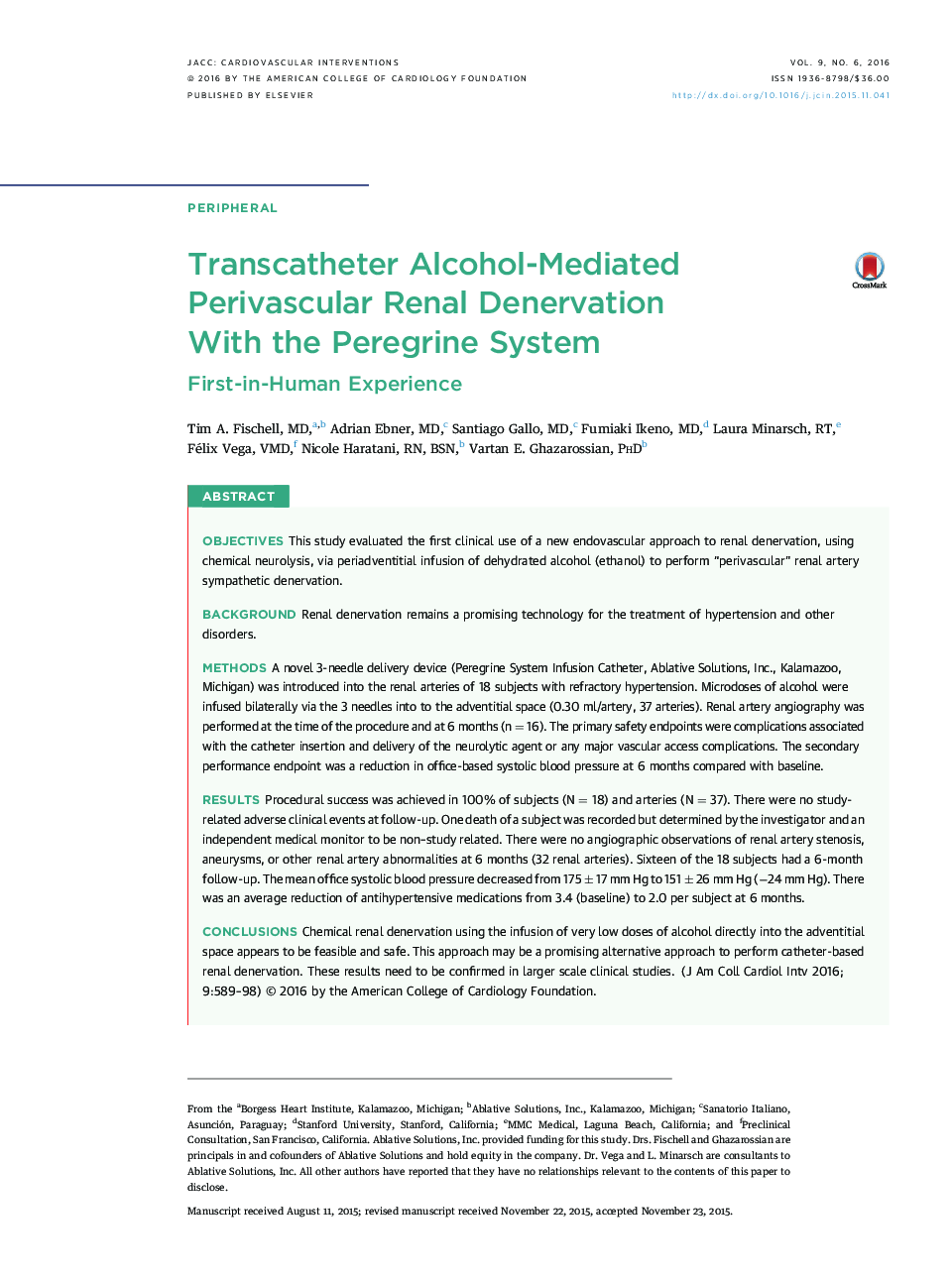| Article ID | Journal | Published Year | Pages | File Type |
|---|---|---|---|---|
| 2939723 | JACC: Cardiovascular Interventions | 2016 | 10 Pages |
ObjectivesThis study evaluated the first clinical use of a new endovascular approach to renal denervation, using chemical neurolysis, via periadventitial infusion of dehydrated alcohol (ethanol) to perform “perivascular” renal artery sympathetic denervation.BackgroundRenal denervation remains a promising technology for the treatment of hypertension and other disorders.MethodsA novel 3-needle delivery device (Peregrine System Infusion Catheter, Ablative Solutions, Inc., Kalamazoo, Michigan) was introduced into the renal arteries of 18 subjects with refractory hypertension. Microdoses of alcohol were infused bilaterally via the 3 needles into to the adventitial space (0.30 ml/artery, 37 arteries). Renal artery angiography was performed at the time of the procedure and at 6 months (n = 16). The primary safety endpoints were complications associated with the catheter insertion and delivery of the neurolytic agent or any major vascular access complications. The secondary performance endpoint was a reduction in office-based systolic blood pressure at 6 months compared with baseline.ResultsProcedural success was achieved in 100% of subjects (N = 18) and arteries (N = 37). There were no study-related adverse clinical events at follow-up. One death of a subject was recorded but determined by the investigator and an independent medical monitor to be non–study related. There were no angiographic observations of renal artery stenosis, aneurysms, or other renal artery abnormalities at 6 months (32 renal arteries). Sixteen of the 18 subjects had a 6-month follow-up. The mean office systolic blood pressure decreased from 175 ± 17 mm Hg to 151 ± 26 mm Hg (−24 mm Hg). There was an average reduction of antihypertensive medications from 3.4 (baseline) to 2.0 per subject at 6 months.ConclusionsChemical renal denervation using the infusion of very low doses of alcohol directly into the adventitial space appears to be feasible and safe. This approach may be a promising alternative approach to perform catheter-based renal denervation. These results need to be confirmed in larger scale clinical studies.
